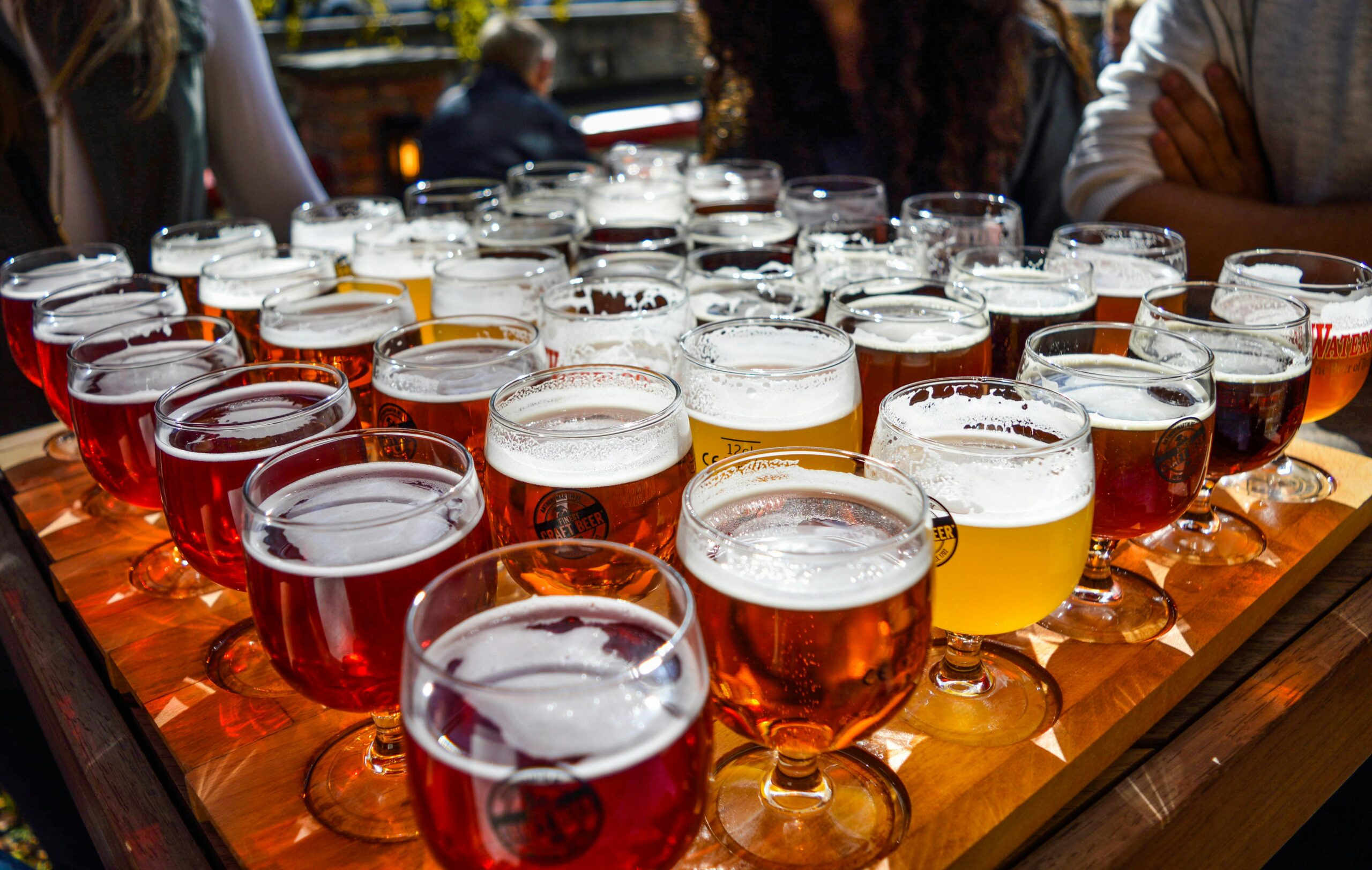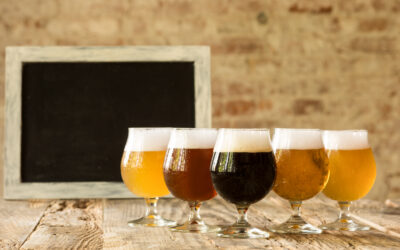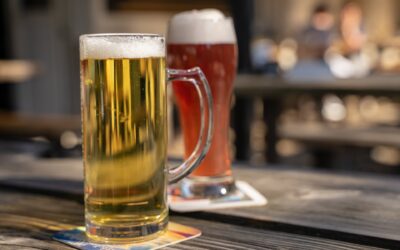Non-alcoholic beers are trending, in some European countries rising to above 10% of total beer sales, though in most they have yet to reach 5%. But do these beers constitute a new style?
Many different factors are driving the growth in non-alcoholic beers. Stricter drink-driving laws are being more broadly enforced; the inaccurate notion that all alcohol consumption is harmful has gained ground; and many young people are preferring not to drink, for now at least. It is also the case that industrial brewers see these as a way of make headway in their last untapped market – the Islamic world.
What matters more to the consumer is that a few of these beers are now pretty impressive.
No alcohol versus low alcohol
The difference between beers containing 0.0% and 0.5% alcohol by volume (ABV) is full of politics. In The Netherlands, for example, a big point is made of the need for 0.0% on religious grounds, and also in pregnancy. The latter is an important part of the claim by anti-alcohol campaigners that all alcohol consumption is harmful, which survives despite strong evidence to the contrary, and ignores the fact that the sugary soft drinks that are often substituted, come with alternative health risks.
The absolute zero stance also ducks the inconvenient fact that many naturally produced fruit juices contain up to 0.5% ABV, a cut-off point that is used to define a ‘soft drink’, on which no alcohol duty is paid.
One advantage for brewing companies of creating a 0.0% beer is that it gets around the advertising ban on beers at major sporting events, from football to Formula One.
That said, when it comes to the flavour of a beer, the differences between 0.0% and 0.5% ABV are more complex, due mostly to the different methods of production, which have developed significantly in recent years.
For the purposes of this piece, we will refer to all beers of 0.5% ABV or lower as ‘non-alcoholic’, though we recognise that some countries define alcohol-free as < 0.1% ABV, with the ‘low alcohol’ bracket being as high as < 1.2% ABV.
The history of non-alcoholic beers
The first attempts to brew low-alcohol beers commercially came in the late 19th century, in response to the spread of Temperance ideas across Europe. However, their flavour was unappealing to consumers, and their lack of stability was an issue for beer sellers.
The first time that beers of up to 0.5% ABV beers were produced on a larger scale was in the United States, after Prohibition was imposed in 1919. Although more acceptable than their forerunners, they were not good enough to survive the decriminalisation of alcohol in 1933, when Prohibition ended, having given birth to the US’s first organised crime networks and all the social mayhem that followed. Russia’s Prohibition experiment suffered a similar fate.
Back then, production involved limiting fermentation by using fewer fermentable sugars, and lowering fermentation time. Such beers tended therefore to be thin and/or unpleasantly sweet, many having wort-like flavours.
The next innovations happened in Switzerland, in the 1930s, when Gurten Bier AG of Bern removed alcohol from fermented beer using vacuum distillation, a technique that literally sucked it out. However, developing the potential of this was curtailed by the outbreak of the Second World War in 1939.
The rise and fall of NABLABs
It was not until the 1960s that another Swiss brewer, Hürlimann of Zurich, combined vacuum distillation with the pioneering use of a new type of yeast, nowadays termed ‘maltose-intolerant’. This left most of the malt sugar unfermented. Hürlimann’s first commercial brand, called Oro, launched in Switzerland in 1969, and went on to appear in 1972 as the multinational brand, Birell, which is still produced under license in several countries.
Non-alcoholic beers enjoyed some popularity in the 1970s and 1980s, becoming termed NABLABs (for Non-Alcohol Beers & Low Alcohol Beers). However, sales fell, as they rarely tasted as good as regular beers and drinkers saw little point in them. With no financial incentive to produce good ones, commercial interest waned.
What has changed in the last decade has been the rise of two contradictory trends, mainly among younger adults. The first is the rise in concern about alcohol consumption, and the second an increased interest in craft brewing.
Newer techniques
New production methods have helped overcome the flavour issues.
So-called maltose-negative yeast, now even available to home-brewers, reduce the worty flavours that appear in under-fermented beers. Also, lowering the fermentation temperature allows a beer to mature in various ways without much alcohol creation, so its progress can be carefully monitored to achieve a better flavour balance. Although fiddly, this technique is relatively cheap, making it affordable to smaller brewers.
Another advance is reverse osmosis, which involves passing a fully-fermented beer through a complex filtration system, to remove both alcohol and water from it. The water is then replaced, bringing the possibility of producing a 0.5% ABV version of virtually any beer. Where flavours do go missing, it is usually possible to bridge the gap in some way.
Larger brewers, able to afford the massive investment required for the technique, are using vacuum distillation, which gets to the same end-point faster and with far less water usage.
In contrast, smaller brewers are way ahead, as usual, in deploying the bigger hoppy and herbal flavours that come from a clever hop recipe, leading to the creation of non-alcoholic beers with bolder tastes.
The issue of style
So, do non-alcoholic beers represent a new style? The simple answer is no. Rather, they reflect existing styles in a different, non-alcoholic format.
This is reflected in the fact that many well-established beer competitions are now advising experienced beer judges that the key attributes of a prize-winning non-alcoholic beer are that it is true to the original style and that the absence of alcohol is hard to detect.
Unlike in the era of NABLABs, brewers now have a far wider range of techniques available to them, which is why the flavour profiles and authenticity of non-alcoholic beers are currently heading ever upwards.
These brews are still a work in progress but it is already clear that brewers are better able to overcome their technical challenges than wine-makers, thus far. However, the production costs remain far higher than for regular beers, which removes any savings made by not having to pay alcohol duty.
It is also fascinating to follow the attitudinal twists and turns, on the part of the tax authorities and anti-alcohol lobbyists, towards the concept of a drink that usually has alcohol in it coming in a format that does not. And on deciding what should be done with the alcohol that has been removed, and the tax that would have been paid on it.
With grateful thanks to Markus Raupach, author of “Workbook for International Beer Sommeliers”.





